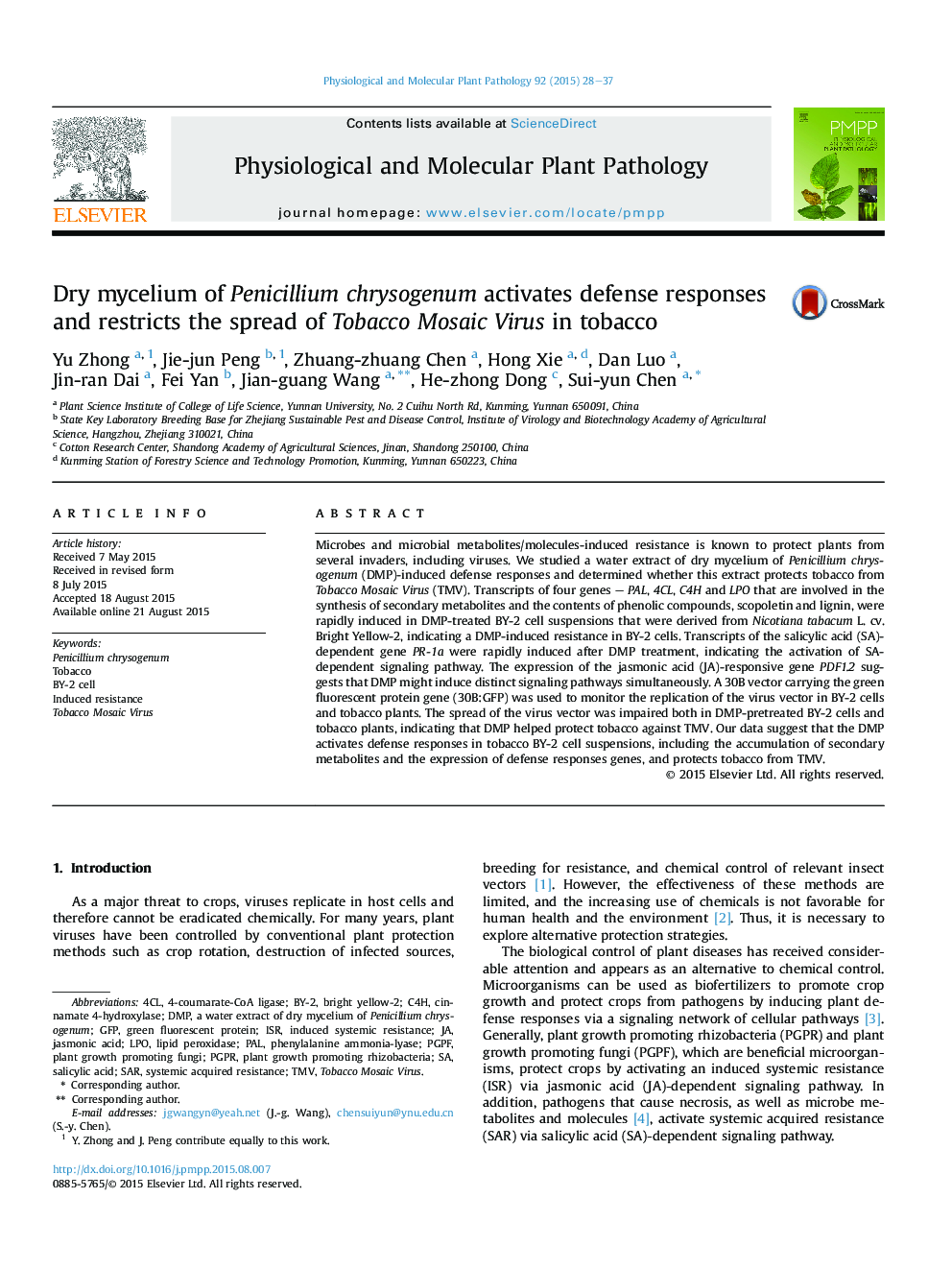| Article ID | Journal | Published Year | Pages | File Type |
|---|---|---|---|---|
| 2836241 | Physiological and Molecular Plant Pathology | 2015 | 10 Pages |
•DMP induced the expression of defense-related genes in tobacco.•DMP induced the accumulation of secondary metabolites.•DMP-induced resistance interfered with the replication of TMV in BY-2 cells.•DMP-induced resistance limited the spread of TMV in tobacco plants.
Microbes and microbial metabolites/molecules-induced resistance is known to protect plants from several invaders, including viruses. We studied a water extract of dry mycelium of Penicillium chrysogenum (DMP)-induced defense responses and determined whether this extract protects tobacco from Tobacco Mosaic Virus (TMV). Transcripts of four genes – PAL, 4CL, C4H and LPO that are involved in the synthesis of secondary metabolites and the contents of phenolic compounds, scopoletin and lignin, were rapidly induced in DMP-treated BY-2 cell suspensions that were derived from Nicotiana tabacum L. cv. Bright Yellow-2, indicating a DMP-induced resistance in BY-2 cells. Transcripts of the salicylic acid (SA)-dependent gene PR-1a were rapidly induced after DMP treatment, indicating the activation of SA-dependent signaling pathway. The expression of the jasmonic acid (JA)-responsive gene PDF1.2 suggests that DMP might induce distinct signaling pathways simultaneously. A 30B vector carrying the green fluorescent protein gene (30B:GFP) was used to monitor the replication of the virus vector in BY-2 cells and tobacco plants. The spread of the virus vector was impaired both in DMP-pretreated BY-2 cells and tobacco plants, indicating that DMP helped protect tobacco against TMV. Our data suggest that the DMP activates defense responses in tobacco BY-2 cell suspensions, including the accumulation of secondary metabolites and the expression of defense responses genes, and protects tobacco from TMV.
